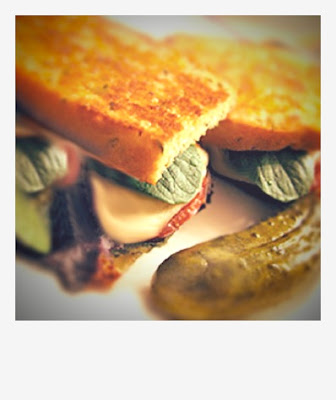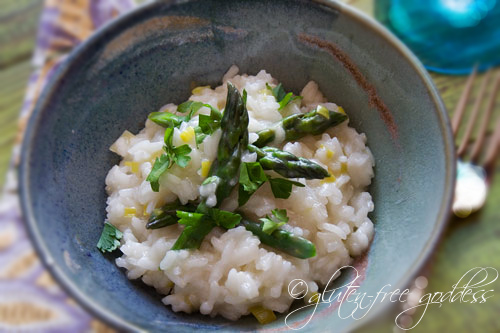
Now that you have mastered milling your own flour, you’re ready to put that beautiful, nutritionally dense, flavourful stuff to good use.
This recipe hails from the Bible. That’s right the from good ol’ word of God to straight to your bread board, this loaf is packed with healthy whole grains and high-protein legumes – it’s like a meal in itself! They really knew what they were doing back in those days.
This is the very same bread that is said to have kept Ezekiel alive in the desert for two years. You think I’m kidding around? Here is the scripture taken from Ezekiel 4:9 - “
Take thou also unto thee wheat, and barley, and beans, and lentils, and millet, and spelt, and put them in one vessel, and make thee bread thereof; according to the number of the days that thou shalt lie upon thy side, even three hundred and ninety days, shalt thou eat thereof.” So there.
The amazing this about this bread is that when these six grains and legumes are combined, they create a complete protein that closely parallels the protein found in milk and eggs! There are 18 amino acids present in this unique bread, including all 9 of the essential ones, from exclusively vegetable sources – naturally balanced in nature.
A word about Complete ProteinsProtein is essential for many bodily processes, including building and repairing tissue. You use protein to make enzymes, hormones, and other body chemicals. It is an important building block of bones, muscles, cartilage, skin, blood, hair and nails.
Protein is made of smaller components called amino acids, 12 of which are manufactured by the human body. Another 9, called essential amino acids, must be obtained from food.
A complete protein or whole protein is a protein that contains all of the essential amino acids. These can be found in animal foods such as red meat, poultry, seafood, eggs, and dairy. The vegetarian sources of complete proteins include soy, spirulina, hemp seeds and
quinoa.
Since most vegetarian foods do not contain all nine essential amino acids, foods must be combined to cover the entire spectrum, otherwise a deficiency will occur. Traditional combinations include beans with rice or corn, beans and grains, beans and nuts, and grains and beans, which all form complete proteins. When you eat hummus and pita, nut butter on whole grain bread, pasta with beans, lentil stew with rice, you are eating complete proteins. It is essential for vegan and vegetarians to pay close attention to combinations of foods so that they obtain all the essential amino acids and stay healthy!
The good news is these foods don't necessarily need to be eaten at the same time in order to be used by the body to build protein, as once was thought. Recent studies show that the body has an amino acid “pool” with about a 24-hour window. The beans you ate for lunch and the rice you had with dinner will make a complete protein once digested, and your finely-tuned-machine-of-a-body will assemble the amino acids for you, without you giving any it further thought. Incredible!
Here’s the recipe for Ezekiel bread. I am telling you, this is not a loaf of Wonderbread, people, this is the real deal. God does not fool around. If you don’t like heavy breads, don’t make this. If you cannot find wheat berries or spelt berries, buy the flour pre-milled. Everything else should be right on your grocer’s shelf.
The next time I make this recipe, I will bake half the dough and freeze the remainder since the loaf is rather large.
Ezekiel BreadIngredients:
2 1/2 cups wheat berries
1 1/2 cups spelt berries
1/2 cup barley
1/2 cup millet
1/4 cup dry green lentils
2 tablespoons dry kidney beans
2 tablespoons dried pinto beans
2 tablespoons dry Great Northern beans (if you cannot find these, use 1 extra tablespoon each kidney and pinto beans)
3 Tbsp. yeast
1 Tbsp. sea salt
2 cups warm water

Directions:
1. Begin by milling the wheat berries. Place in blender and process until the flour stops falling into the center of the container. Sift to desired texture. Set aside. This should yield about 2 cups wheat flour
2. Combine all other grains and legumes in blender and process until the flour stops falling into the center of the container. Sift to desired texture. This should yield about 3 cups of flour.
3. In a large bowl, mix water and yeast until dissolved. Add 3 cups of the grain and legume flour and mix by hand 500 times (or a lot).
4. Add 2 cups of wheat flour and mix until the dough begins to pull away from the sides of the bowl.
5. Drop dough onto a floured board and knead for approximately 5 minutes.
6. To make a braided loaf, which was the traditional shape used in Biblical times, form a ball with the dough and slice into 3 pieces, and then form these into “snakes” (see photograph). Pinch dough at top and braid to the bottom.
7. Let this rise in a warm place for about an hour.
8. Preheat oven to 350F. Once heated, place bread on a baking stone or baking sheet lined with parchment paper and bake for 30-35 minutes.
9. Break bread with loved ones, eat and enjoy.
Few things are more satisfying than baking bread, especially when you know exactly where your ingredients come from. This is an exceptionally healthy bread, the way they it used to be eaten, so bake a loaf today and have a holy moment. Lordy, it’s a good thing.
p.s. If you still haven't gotten around to making
hazelnut butter, you'll be really sorry when this hot loaf of bread comes out of the oven.



















